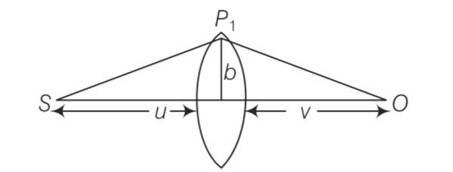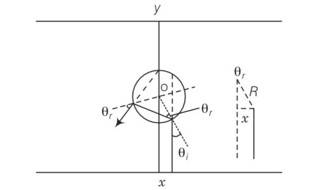Physics Ncert Solutions Class 12th
Get insights from 1.2k questions on Physics Ncert Solutions Class 12th, answered by students, alumni, and experts. You may also ask and answer any question you like about Physics Ncert Solutions Class 12th
Follow Ask QuestionQuestions
Discussions
Active Users
Followers
New answer posted
4 months agoContributor-Level 10
This is a Short Answer Type Questions as classified in NCERT Exemplar
Explanation- According to first statement, when the materials which absorb photons of shorter wavelength has the energy of the incident photon on the material is high and the energy ofemitted photon is low when it has a longer wavelength.
But in second statement, the energy of the incident photon is low for the substances which has to absorb photons of larger wavelength and energy of emitted photon is high to emit light of shorter wavelength. This means in this statement material has to supply the energy for the emission of photons.But this is not possible for a s
New answer posted
4 months agoContributor-Level 10
This is a short answer type question as classified in NCERT Exemplar
no reversibility of lens maker formula is not possible.
New answer posted
4 months agoContributor-Level 10
This is a short answer type question as classified in NCERT Exemplar
m=v/u = D/f
So m = 25/10 = 2.5= 0.025m
P= 1/0.025= 40D
This is the required power of lens.
New answer posted
4 months agoContributor-Level 10
This is a Short Answer Type Questions as classified in NCERT Exemplar
Explanation- (i) Here it is given that, an electron absorbs 2 photons each of frequency ν then ν where, v′ is the frequency of emitted electron.
Given, Emax= hv-
Now, maximum energy for emitted electrons is Emax= h2v-
(ii) The probability of absorbing 2 photons by the same electron is very low. Hence, such emission will be negligible
New answer posted
4 months agoContributor-Level 10
This is a short answer type question as classified in NCERT Exemplar
As the refractive index for red is less than that for blue, parallel beams of light incident on a lens will be bent more towards the axis for blue light compared to red.
By lens makers formula 1/f=
So fb
New answer posted
4 months agoContributor-Level 10
This is a Short Answer Type Questions as classified in NCERT Exemplar
Explanation-
=
So wavelength of proton is times of alpha particle
New answer posted
4 months agoContributor-Level 10
This is a Short Answer Type Questions as classified in NCERT Exemplar
Explanation- from conservation of momentum
Pc=PA+PB
=
=
Case 1 when both momentum are positive
=
Case 2 when both momentum are negative
=
Case 3 when 1 is negative and 2 is positive
=
Case4 when 1 is positive and 2 is negative
=
New answer posted
4 months agoContributor-Level 10
This is a long answer type question as classified in NCERT Exemplar
Time from S to P1 is
t1 =
Time from P1 to O is
t2 = ;
the time required travel through lens is t1 =
so total time is t=1/c(u+v+b2/2D+(n-1)(wo+b2/ ))
after solving we get
differentiating with respect to time
t=1/c(u+v+b2/2D+(n-1)K1In(K2b))
dt/db=0=b/D-(n-1)K1/b
b2= (n-1)K1D
b=
New answer posted
4 months agoContributor-Level 10
This is a Short Answer Type Questions as classified in NCERT Exemplar
Explanation- Suppose nA is the number of photons falling per second of beam A and nB is the number of photons falling per second of beam B.
NA=2nB
energy of falling photon A=hvA
B=hvB
as we know intensities are same
nAhvA=nBhvB
va/vb=nB/nA=1/2
vB=2vA
New answer posted
4 months agoContributor-Level 10
This is a long answer type question as classified in NCERT Exemplar
Since the material is of refractive index , is negative and is positive
| |= | |=| |
Explanation- since the material is of refractive index , is negative and is positive
| |= | |=| |
The total deviation of the outcoming ray from the incoming ray is 4 rays shall not receive if
<4 <
<4 <
sin =x/R
Light emitted from the source shall not reach the receiving plate under this condition
Taking an Exam? Selecting a College?
Get authentic answers from experts, students and alumni that you won't find anywhere else
Sign Up on ShikshaOn Shiksha, get access to
- 65k Colleges
- 1.2k Exams
- 686k Reviews
- 1800k Answers


